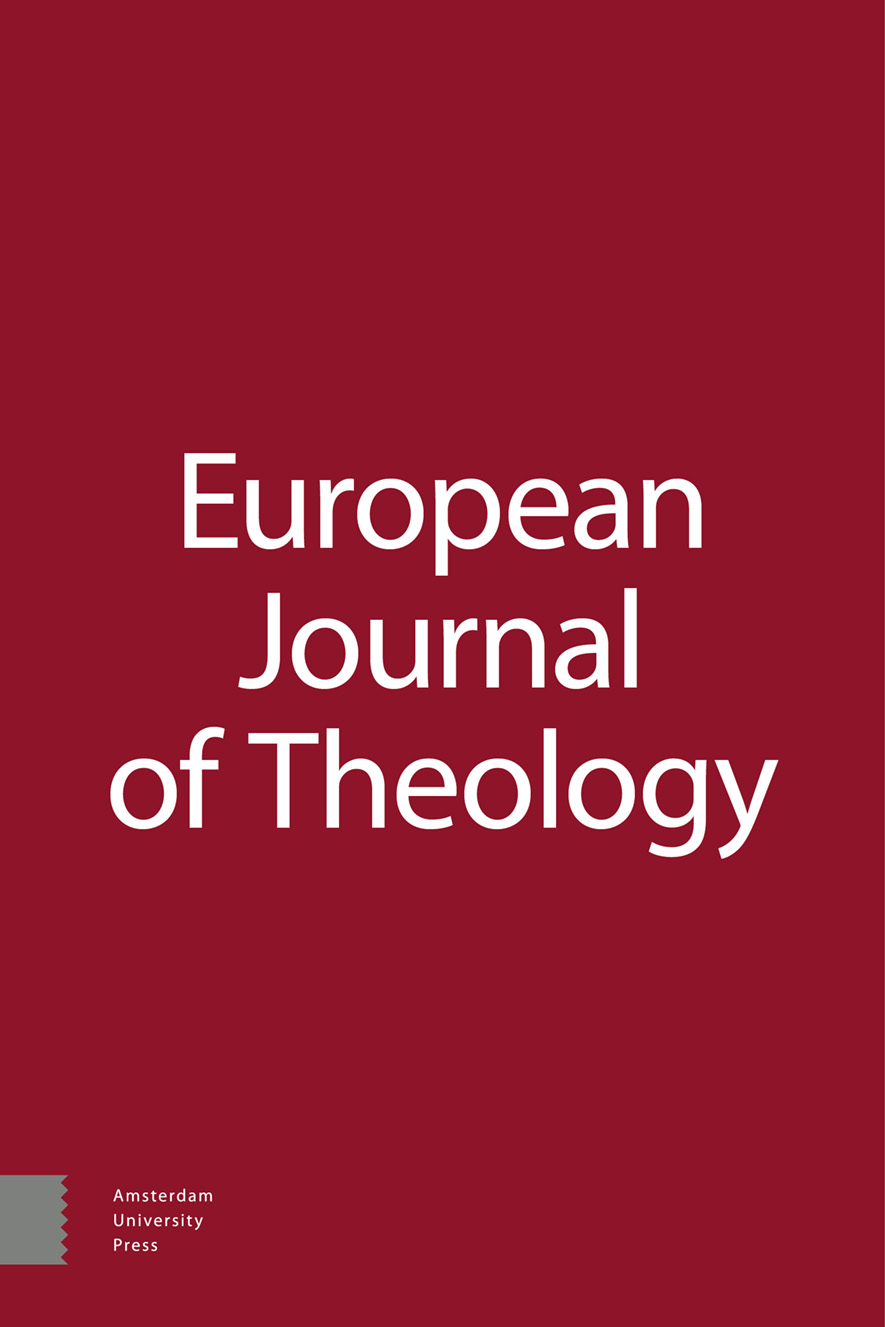- Home
- A-Z Publications
- European Journal of Theology
- Previous Issues
- Volume 32, Issue 2, 2023
European Journal of Theology - Volume 32, Issue 2, 2023
Volume 32, Issue 2, 2023
Language:
English
- Editorial
-
- Artikelen
-
-
-
Esau und Jakob: Familien und Figuren im Wandel?
More LessSummary The two protagonists of the Jacob narrative (Genesis 25–49), Jacob and Esau, and their respective families constitute the topic of the present article. Using the method of narrative exegesis of Old Testament stories, it examines the way these two figures are characterised. The focus of research is on the principal characters; a subsidiary issue is the way in which families are portrayed in the Jacob narrative. Read More
-
-
- Articles
-
-
-
Hope for the People of God and for the World According to the Bible
More LessZusammenfassung Im evangelikalen Bereich wird die Hoffnung der Kirche allzu oft auf das Jenseits beschränkt. Gottes neue Welt wird völlig ohne Beziehung zur gegenwärtigen Welt verstanden. Doch wie kann die Gemeinde unter solchen Umständen die Notwendigkeit einsehen, sich um den Bedürfnissen der Welt zu kümmern? Der vorliegende Artikel hebt verschiedene Beziehungen zwischen alter und neuer Sch Read More
-
-
-
-
Exegesis versus Representation: Assessing Barth’s Exegesis in the Römerbrief After 100 Years
More LessZusammenfassung Der vorliegende Artikel befasst sich mit zwei Fragen bezüglich Karl Barths Exegese in seinem berühmten Kommentar zum Römerbrief. Zunächst: ob Barths Exegese eine zuverlässige Richtschnur für die Kirche wie für interessierte Leser im 21. Jahrhundert darstellt. Zweitens: ob Barth Paulus‘ Gedankengang im Römerbrief gerecht wurde und ob er dessen Theologie treu wiedergab. Der Artikel versuc Read More
-
-
-
Barth, Van Til and Torrance – Evangelical Reception of Karl Barth
More LessSummary This paper seeks to establish the current situation in respect of Barth reception among evangelicals, focussing on Barth reception among evangelicals in Scotland. Describing my own theological pilgrimage, I noted that this reception involved a contrast between two Reformed ‘tribes’, the one centred on Cornelius Van Til (against Barth) and the other on T.F. Torrance (for Barth). In the early period of Van Til’s criticism of Read More
-
-
-
Christological Controversies: Will the Real Catholic Žižek Please Stand Up?
More LessSummary Plato’s dialogue Parmenides contains the infamous ontological bombshell, the so-called Third Man argument. This argument involves a reductio criticism of the forms, arguing that the reductio premise – roughly, ‘there cannot be any ontological interpenetration between the One and the many’ – is false. The argument intimates that the only way for thought to move beyond the forms is to accept the ‘impossible’ objec Read More
-
-
-
Secular Abraham: Exploring Abraham’s Righteousness for Hopeful Public Discourse
More LessSummary The figure of Abraham occurs both in the Bible and in the Qur`an. In the Bible he is in particular held up as one whose faith is counted as righteousness. Similarly, the Qur`an reflects that Abraham is a ‘pure monotheist’ who will be among the righteous. He is also popularly understood as the Father of Faith, with interfaith and secular discourses representing him as the person who joins Judaism, Christianity and Islam tog Read More
-
- Reviews
-
Most Read This Month
Article
content/journals/09602720
Journal
10
5
false
en


